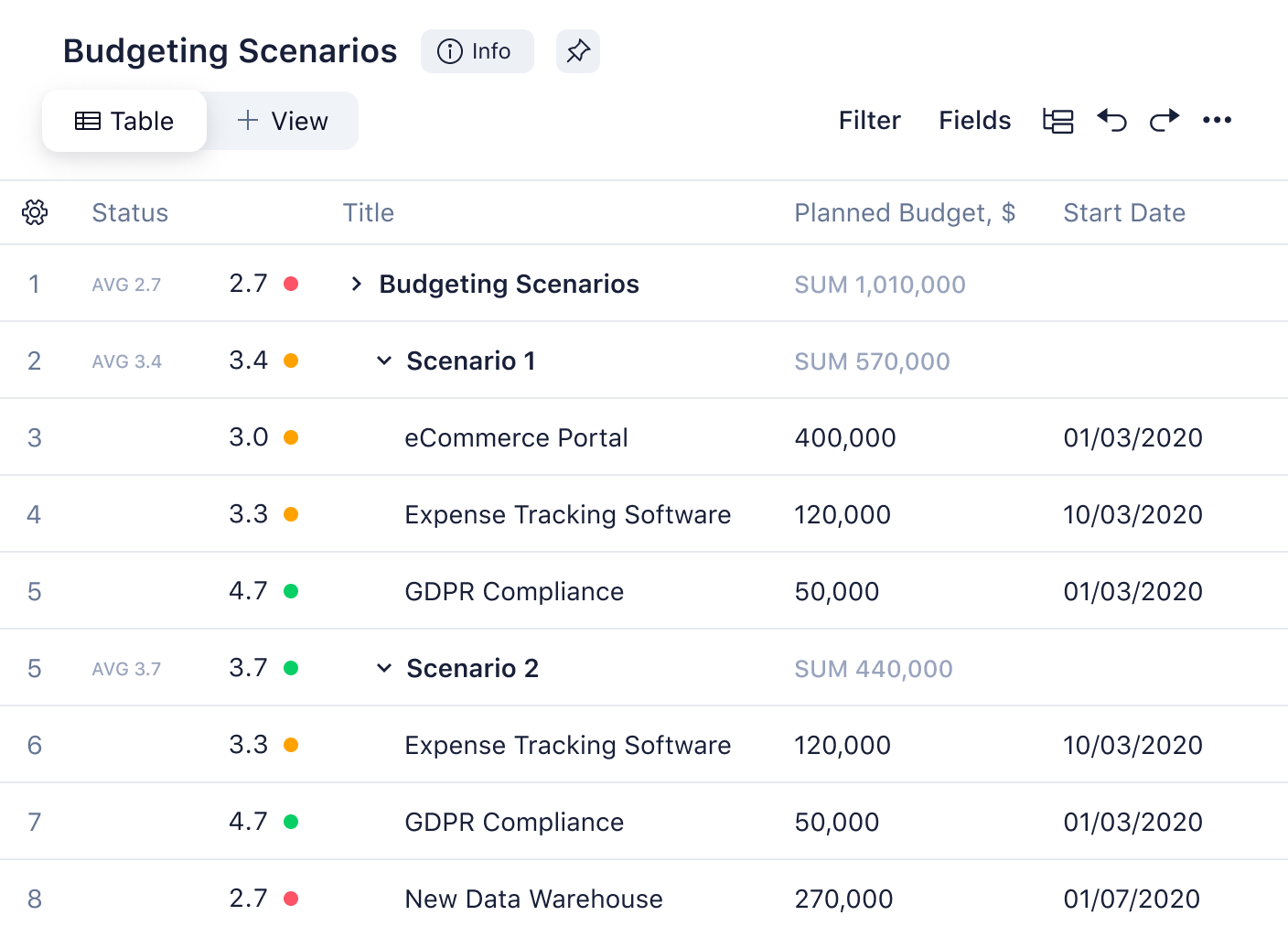What Is PRINCE2 in Project Management?
PRINCE2 (PRojects IN Controlled Environments) is a process-based project management methodology that focuses on organization and control throughout the entire project. There is a thorough project plan, each stage is structured, and any loose ends are tied up after the project is complete.

Execute your PRINCE2 project from start to finish in Wrike — start your free trial now.
Benefits of PRINCE2 project management
The PRINCE2 project management methodology is celebrated globally for its structured approach. The benefits include:
Streamlined project management
If you’re new to project management, PRINCE2 is ideal for you. It simplifies project management with clear, step-by-step guidance, offering the necessary help to handle projects confidently.
Continuous improvement
PRINCE2 encourages ongoing assessment and adaptation, which is important for continuous improvement in project management. This approach allows teams to learn from each phase and apply lessons to future projects, optimizing processes and outcomes over time.
Risk mitigation
PRINCE2 places a strong emphasis on identifying and managing potential risks early in the project lifecycle. This minimizes surprises and enables teams to handle challenges more effectively, ensuring smoother project execution.
Adaptive framework for diverse projects
No matter the size or type of your project, PRINCE2 adapts to meet your needs. It includes solid team management techniques that inform your decision making and ensure your project stays on track.
Career advancement
PRINCE2 is widely used around the world and supported by the Project Management Institute. Achieving a PRINCE2 certification could be a stepping stone towards becoming a Project Management Professional (PMP), significantly advancing your career.
The 7 principles of PRINCE2 project management methodology
The PRINCE2 method is built on seven key principles:
- Projects must have business justification, including a clear need, defined customer, realistic benefits, and detailed cost assessment.
- Continuous learning is essential. Lessons are sought and recorded at every step in the process and used to improve future work.
- Roles and responsibilities are clearly defined, and everyone knows who is responsible for what.
- Work is planned in stages. Large projects are broken up into phases, with time in between to reflect on lessons learned and ensure the project is progressing and is still on track to meet its goals.
- Project boards establish baseline requirements for essentials like deadlines, cost, risk, and scope and delegate day-to-day management responsibilities to a project manager. They make sure everything aligns with the project’s framework.
- Teams use a quality register to check deliverables against requirements, employing a technique that ensures each output is successful.
- The PRINCE2 method should be adjusted to suit the specifics of each project. The amount of oversight and planning can be tailored to fit the scope, the number of people involved, etc.

The 7 phases of PRINCE2 project management
The PRINCE2 process follows these seven phases:
- Start-up: A new project request is submitted in the form of a project mandate, which defines the proposed project’s business justification. If approved, a more detailed project brief covering resources, deliverables, etc. will be created.
- Directing: The project board reviews project briefs for approval and determines what is required to execute the project.
- Initiation: The project manager is appointed and creates a comprehensive project plan, including baselines for time, cost, quality, scope, risk, and benefits. Work begins once the project board approves the plan.
- Controlling: The project manager breaks the project down into smaller “work packages” and assigns them to the project team to complete.
- Managing product delivery: The project manager ensures the project progresses as planned and that deliverables meet expectations. The project board evaluates completed work packages to either approve or request additional work.
- Managing stage boundaries: At the end of each stage, the project board holds a review to decide whether to continue to the next phase or abandon the project. Project managers conduct a retrospective with their team to record the lessons learned and improve processes for the following work stage.
- Closing: Once the project is complete, the project manager completes any necessary documentation, outcomes, and reporting.
The seven phases above can be visualized in a Gantt chart. See the image below for an example of how to map out these stages.

PRINCE2 practitioner certifications
While you don’t necessarily need a project management certification to employ PRINCE2 on your team, several training courses and exam options can improve your skills.
Here’s a breakdown of the certification paths available, including the latest Agile options:
Standard PRINCE2 certifications:
- Foundation: The entry-level certification that provides the basics of PRINCE2 methodologies.
- Practitioner: For those looking to apply PRINCE2 methods in real-world scenarios. It assesses your ability to manage projects using the framework.
- Foundation + Practitioner: A comprehensive path that covers the theoretical and practical applications of PRINCE2.
- Practitioner (Bridging from PRINCE2 6th Edition): Designed for those certified under the previous edition, updating their skills to the latest standards.
Agile PRINCE2 certifications:
- Agile Foundation: Introduces how PRINCE2 can be blended with Agile practices like Scrum to enhance project flexibility and delivery.
- Agile Practitioner: Focuses on understanding how Agile methods work within the PRINCE2 framework to manage projects dynamically.
- Agile Foundation + Practitioner: The full path for mastering the integration of PRINCE2 and Agile methodologies for a versatile project management approach.
When choosing a PRINCE2 training or certification, ensure it’s from an accredited provider and covers the most recent edition to guarantee the latest techniques and best practices are at your disposal.
Curious about other popular project management methodologies?
To learn more about PRINCE2 and other common project management methodologies, download our free guide: The Beginner’s Guide to Project Management Methodologies.

Artem Gurnov
Artem is a Director of Account Development at Wrike. He previously held the role of Project Manager, overseeing a team of customer success managers (CSMs). Over the years of building teams and scaling business processes, he has successfully deployed multiple projects, from automating client outreach to setting up work prioritization tools for sales reps and CSMs.


